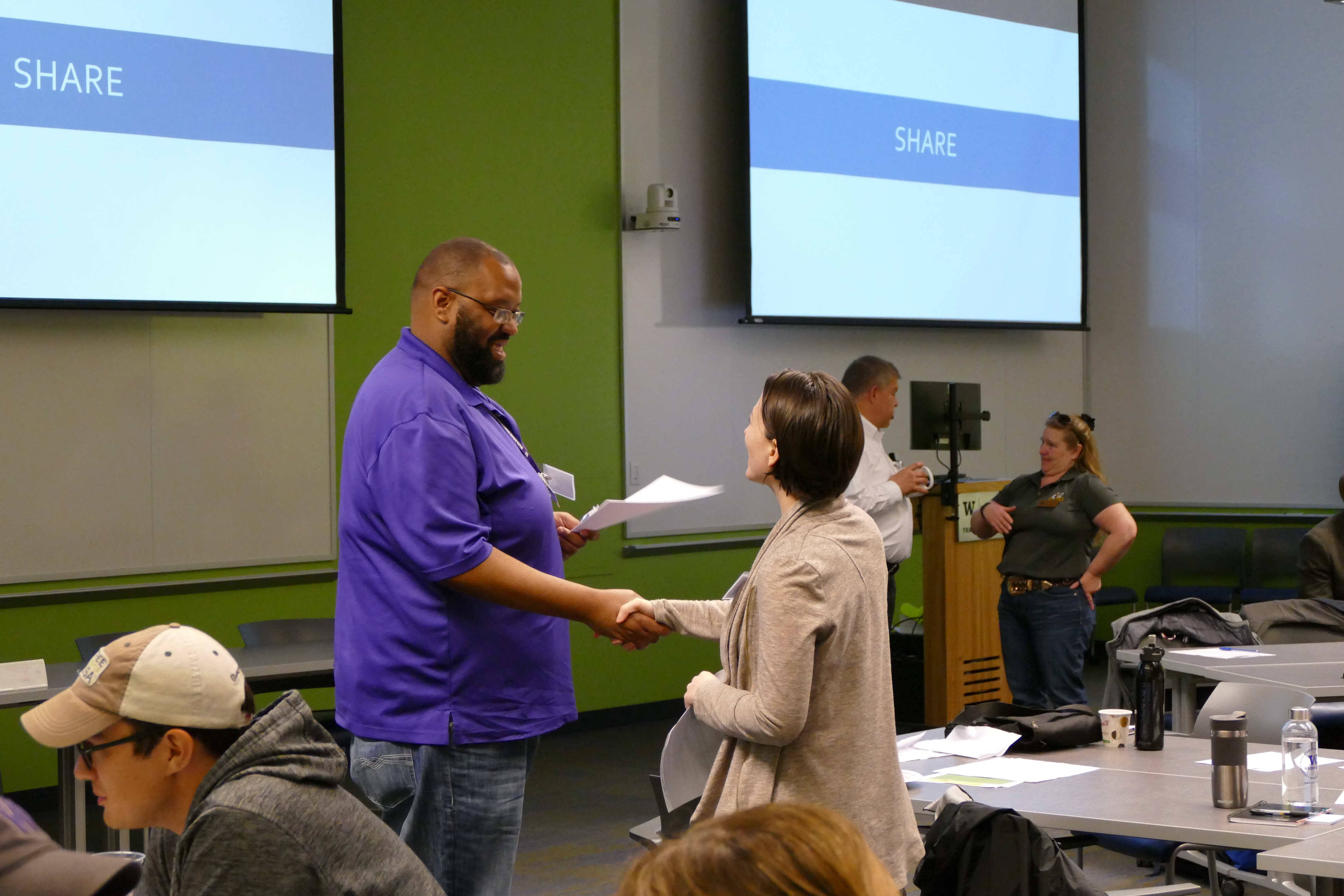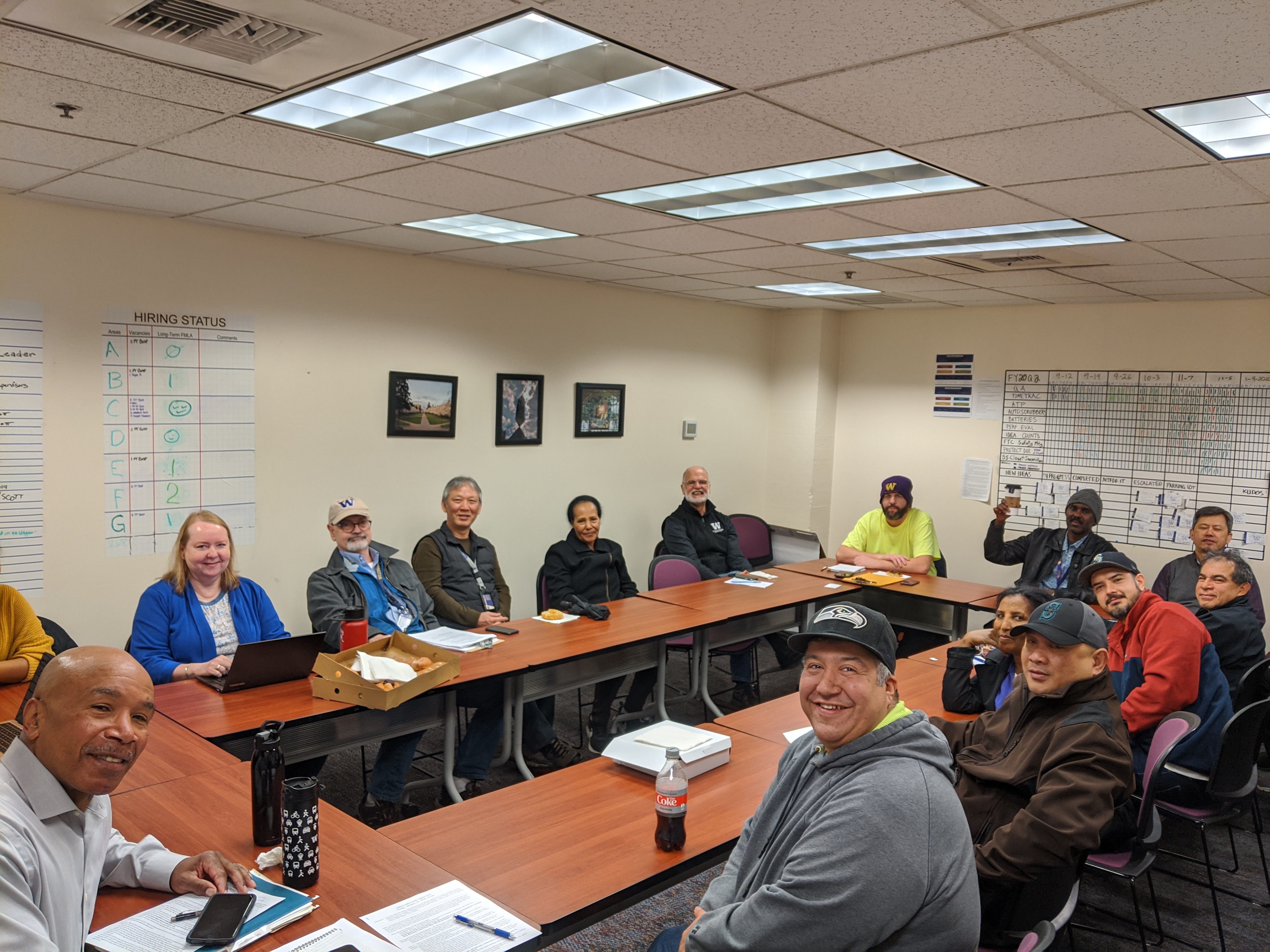University of Washington Builds to Last
University of Washington is not taking anything, or anyone, for granted. We spoke with Liz Gignilliat, the Recycling Manager at the university about how their university consistently plans success by keeping communication and connection open between everyone involved in making the recycling program work.
To start, the recycling office keeps in close contact with all custodial teams whom they work with. The majority of buildings (academic, administrative and facilities) are serviced by custodial teams, who are in the same office as UW Recycling: the Building Services Department. Custodial teams have nearly 270 employees, while UW Recycling has about 12. However, they always make sure they’re on the same page.
UW Recycling prepares and provides the bins. Custodians service them, and UW Recycling Operations Crew empties the dumpsters once they’re full. It’s a constant chemistry that justifies being in the same department. The custodians’ goals are cleanliness, health safety, Gignilliat says, and while the recycling office wants those as well, they are also looking to reduce waste and increase compost & recycling.
“We’re providing a safe environment and doing it in a green and sustainable way,” says Gene Woodard, Director of the Building Services Department in an interview with Healthy Green Schools & Colleges. “It’s the overall elevation this has for the people on my team that really makes me happy.”
But how do they make sure, on such a large campus (total enrollment of 47,554), that everything works in harmony?

Working Together
Within the Building Services department, UW Recycling meets with the waste collectors each day in the afternoon to discuss any issues that are coming up. Across campus, UW Recycling stays in contact with custodial managers of each area of campus, including those not serviced by the Building Services department (such as housing, athletics or the hospital).
Before the pandemic, custodial groups in each area would meet in person to discuss issues, and if there was a waste related issue, custodial mangers would pass along the information directly to UW Recycling. If someone complains on campus, the issue is brought to UW Recycling and then it is discussed with custodial staff. In this way, feedback constantly flows between the different working groups on campus. Finally, if someone on campus wants more or less bins in a particular area, both UW Recycling and a custodial team member do a site visit together and make a decision on the request.
However, UW has pioneered a program which brings this collaboration beyond simple services and convenience of their staff to their health.
With the support of the Safety & Health Investment Project (SHIP)- a grant paid for by the State of Washington’s Department of Labor & Industries, UW Environmental Health & Safety and the Building Services Department have been meeting with custodial staff for over 5 years to talk about the ergonomics of their jobs. A physician and other members of the ergonomics project survey custodians each week about primary tasks and which ones are uncomfortable or painful. The staff in these meetings test products like vacuums, mops and recycling bins for safety and convenience.
“It’s so helpful. There are so many things that if you haven’t done it a thousand times, you would not think about it,” says Gignilliat who uses the information to purchase the best tools and bins for the UW campus. “They prevent a lot of headaches on our side.”

MiniMax Program Shows Success
The MiniMax program is one of the premier examples of the harmony cultivated between UW Recycling, Building Services custodians and the rest of the campus community.
The impetus for the program was the acquisition of a 22-story building which would serve as the main offices for the university. Named the UW Tower, the building has 510,546 square feet of floor space, and to service the space, custodians needed to come up with a more efficient way to collect waste.
The MiniMax program focuses on switching deskside lined garbage bins with custodial service to small, unlined deskside trash and recycling bins without custodial service. One purpose of the program is to both force people to become aware of their waste by bringing their own waste to a central waste station, and another is to significantly cut down on labor time and energy. Without servicing each desk, custodians can focus on more important tasks such as making sure public spaces are clean and safe.
“The MiniMax program is the perfect example of our goals being aligned with the custodial goals into a physical manifestation of a project” Gignilliat says.
Since its first implementation in 2008, the MiniMax program has spread across campus as a means of waste diversion and efficiency as a result of this collaboration between custodial staff and the UW Recycling office.

From a recycling office perspective, Gignilliat sees the input of custodial staff as essential to her success on campus.
“By understanding how their jobs work, you’re sharing respect for them and showing how much you value their time and their work.” Gignilliat says and leaves other recycling managers with a heads-up: “If you’re not asking them ahead of time, you’re just going to have to do more work later!”
Written by Eric Halvarson
If you learned from this spotlight, make sure to register for next month’s webinar Essential Workers as Essential Voices: Operations & Custodians in Waste Program Planning and Implementation on August 19, 2-3:00pm EST
For more information, contact Liz Gignilliat at lizg9@uw.edu. Liz is also a board member with CURC!
To see Liz speak more on the MiniMax program, you can view a presentation from a CURC webinar in 2016 called “Office Settings”

